| Home |
| Misc. |
|
2-July-2012 Bertho Boman |
|
|
|
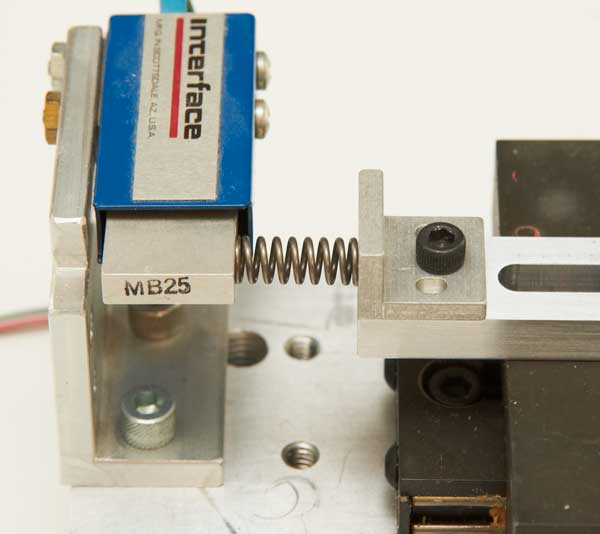
Measurement Object Introduction
The spring being measured is shown in the picture above. It is resting on the left side against a loadcell, a devise to accurately measure force, and on the right side it is being pushed by a linear slide that accurately moves on ball bearings in a single direction. 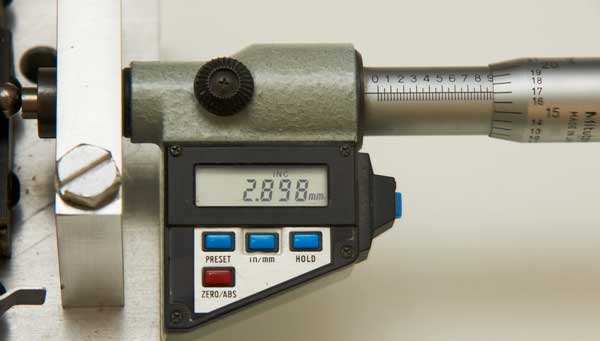
Micrometer This is the micrometer that from the right side very accurately pushes the slide against the spring. The movement can be measured to 1 micrometer (1/1000 of a millimeter). It pushes against a ball for highest accuracy. That is not needed for this test but I use the same setup for higher precision measurements. 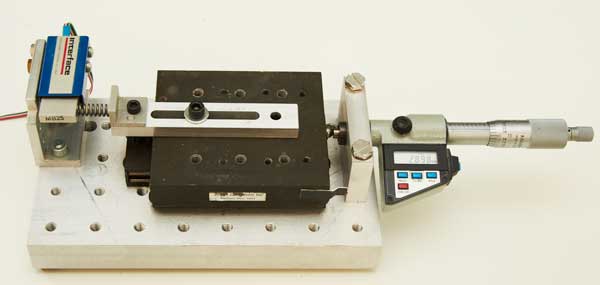
The Full Setup First, the position is found where the slide just touches the spring without compressing it at all. The micrometer is set to zero and then the force vs. distance is recorded as the micrometer is moving the slide towards the spring. This is continued until the spring is fully compressed. The force increases extremely fast at that point so advance very slowly. With a caliper measure the fully compressed spring length and then release the pressure on the spring and remove it from the fixture. With a caliper measure the uncompressed (free) length, the OD and the wire diameter. Calculations: 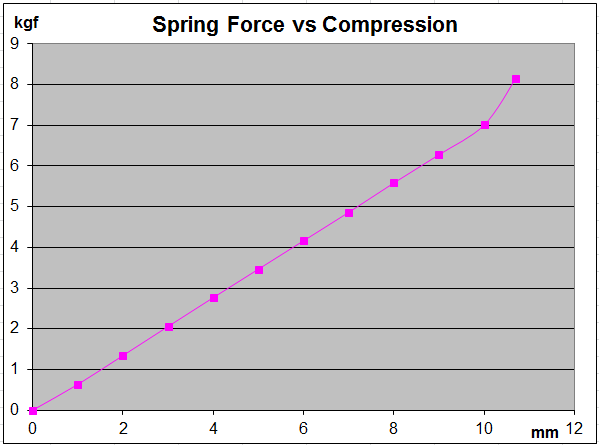
Plotted Data The convenient way is to enter the measured data into a spreadsheet and then create a graph. If measured correctly, and the spring is a normal uniform compression spring, it should be a straight line until it quickly increases at the point when the coils start touching each other.
Spring Data Summary:
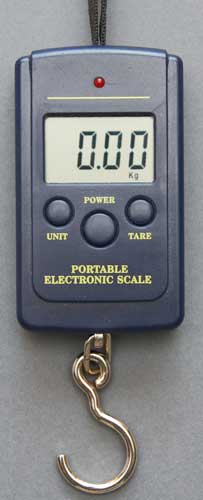
Low-cost Luggage Scale Instead of the loadcell we will use a low-cost luggage scale that can be found at many locations, often for less than $10. I have checked several brands with precision standards and they have been VERY accurate. It is a recommended accessory since it can be used to measure various variables on the 3D printer. 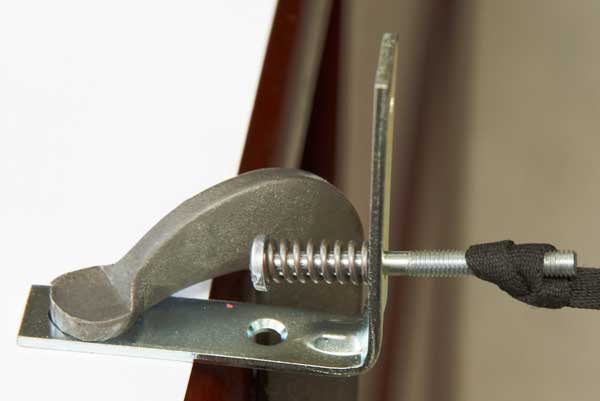
Spring-Screw-Bracket A regular shelf bracket has been clamped to a desk and a screw inserted through the spring and the bracket. By pulling on the screw the spring will be compressed. Crude but functional. The pull needs to be straight to avoid extra friction from the sides but the pull force is so much larger than the friction so the friction is insignificant in these measurement. 
The Full Setup In this case we cheat, we do not measure the force vs. distance, we just measure the required force to compress the spring until it just reaches minimum length. I took three readings: 7.1, 6.9 and 7.0 kgf on the scale. While fully compressed I also measured the length.
Calculations:
As can be seen, this simple method still gives good data. Summary:
Extension springs are measured in a similar way except care need to be taken not to exceed the max force of the spring which is unfortunately unknown. In other words, do not pull so hard that it permanently deforms the spring. Bertho Boman
|